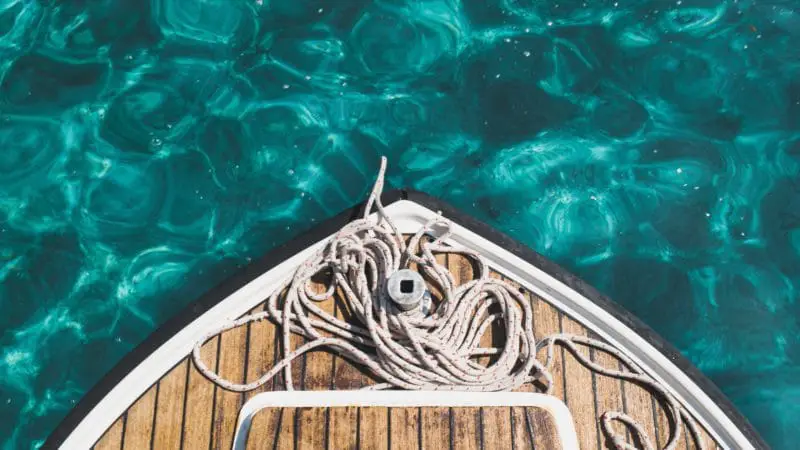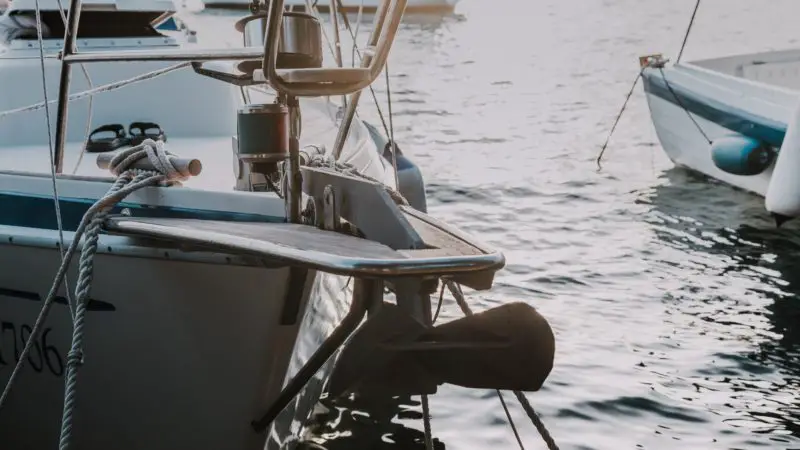How does a jib furler work on a sailboat?

The jib furler, because of its great role, is essential for cruising. No need to consider a crossing without having this tool on board. And for good reason, the furling system replaces the wardrobe of several sails and the reefing system formerly used. These serve respectively to adapt to a force of wind and to reduce the surface of the sail. Appeared in the 1980s, the sail furler is now found on the majority of pleasure sailboats. This is a device used to roll up the headsail on itself, to facilitate maneuvers and to make navigation safer. However, to use it properly, you need to understand how it works. so here's how a jib furler works on a sailboat.
What is a jib furler?
The jib furler is, as its name suggests, this rigging equipment which allows the headsail to be furled and unfurled, with precise adjustment. In other words, it is used to adjust the surface of the canvas to the force of the wind and then to easily handle the latter according to the speed of the wind. The tool also makes it possible to reduce the number of onboard headsails by completely furling some. This frees up more space in the boat's lockers and allows it to be used for storing multiple items.
Correct operation of the jib furler also offers the possibility of enjoying easier navigation, whatever the weather. It is also an excellent guarantee of safety due to the absence of long, physical and exposed maneuvers. Be careful not to confuse it with the furler designed only for sending or furling sails such as the gennaker or staysail. These can only be fully deployed.
As a reminder, the jib is a triangular sail, the smallest in size, which is systematically found at the front of a sailboat. The part is generally located between the genoa or mainsail and the tormentine also called the storm sail. Its surface being formed by the halyard, sheet and tack points. Before explaining how a jib furler works, it is important to understand its design.
The jib furler is quite similar to the genoa furler. It is in fact made up of a section in which the sail is derailed and of a rotating drum. The latter is fixed to the lower and mobile part of the profile. It guides the winding end (the line) and can be recognized by its worm shape.
Placed on the forestay, the profile is composed of a fixed part in which a mobile part rotates. Its first component extends from the mast head to the deck of the boat with an integral part at each end. As for the mobile part, it generally surrounds the forestay. This is a rigid light metal pipe around which the jib wraps. On its lower part is the part on which the tack of the sail is fixed. The upper part accommodates the part provided for the headrest and the halyard.
How does a jib furler work?
Le operation of the jib furler is based on winding the sail around a rigid tube. This relatively simple mechanism can be controlled by the furling line. This is a line that wraps around the drum and the second end of which is brought back to the cockpit. To wrap the jib while sailing around the furling tube, just pull on the line. Conversely, when you pull on one of the headsail sheets, it unfolds.
It is not possible to talk about the operation of the jib furler without describing the reefing. This is in fact a maneuver used on touring sailboats which serves to stabilize the sailboat and limit untimely luff departures. To this end, round markings corresponding to percentages of reduction of the fabric have been provided along the guide of the sail.
At the rate of one circle for a drop of about 10%, you have the possibility of winding a headsail up to 30% before it loses its shape. To succeed with the maneuver, our advice would be to move the jib carriage forward as the canvas surface decreases.
Which line should you use to furl your jib?
Note that for the furling line, you will need a rope 1,5 times the length of the boat. If your boat is for example 14 meters, the rope must measure 21 m and its diameter must be 6 mm (or 8mm for a better grip if your drum is large enough).
For the jib halyard, the calculation to be carried out to know the length of rope required is as follows:
L = 3 x Mast height
On the other hand, the diameter of the halyard varies according to the length of your sailboat:
| Sailboat length in meters | Halyard diameter Of fire |
| 6 to 8 | 8 |
| 9 | 10 |
| 10 | 10 |
| 11 | 12 |
| 12 | 12 |
| 14 | 12 |
| 16 | 14 |
| 18 | 14 |
| 24 | 16 |
Regarding the jib sheets, it is the rope that will be used to tuck and shock the sail. There are two of them, one for port and one for starboard. Too long a rope makes maneuvering difficult and too short a rope is also dangerous. Thus, you must provide a rope of one length equal to 1,5 times the length of your boat. Also pay close attention to the weight of the listening. If it is too heavy, the performance of the sailboat will be negatively influenced. You can refer to the table below to find the correct jib sheet diameter for the size of your sailboat:
| Sailboat length in meters | Jib sheet diameter |
| 6 to 8 | 10 |
| 9 | 12 |
| 10 | 14 |
| 11 | 14 |
| 12 | 14 |
| 14 | 14 |
| 16 | 14 |
| 18 | 14 |
| 24 | 16 |
Below is a list of polyester ropes of different diameters that you can use for your halyard, line and even your jib sheets:
- Braid Ø 4mm
- Braid Ø 5mm
- Braid Ø 6mm
- Braid Ø 10mm
- Braid Ø 12mm
- Braid Ø 14mm
- Braid Ø 16mm
- Braid Ø 18mm
- Braid Ø 20mm
Maneuvering with the jib furler: tips and pitfalls to avoid
Like all the elements involved in the safety of the sailboat, the reliability and rewinder assembly must be flawless. To this end, we advise you to maintain a slight tension on the sheet until the end of the jib furling process.
Also, if careful monitoring of the engagement of the rope is not observed during the halyard, you are guaranteed to leave the road! This is why being two on the operation is a hell of a plus. A teammate will guide while his partner takes over the jib halyard (or you can use a rope guide to help you if you are alone).
To hoist the jib, the ideal would be to tension it well, making sure to release a few centimeters of slack.
In any case, you must avoid letting the sail fasey, furling it under high tension or associating the jib furler with a winch.
How to keep your jib furler functional?
Once you know how a jib furler works, we must also learn to clean it. Maintenance of the jib furler is similar for all brands (whether Harken, Facnor, Profurl, Furlex or Plastimo). It usually consists of cleaning the device with fresh water. During the winter, the ideal would be to remove the sail. Before putting it back on, we recommend that you clean the dust accumulated on the groove of the profile with a jet of water. You can also put a little marine grease on the luff of the sail. Regardless of the brand of your reel, this equipment is designed to last for years to come. Moreover you can find used reels in very good condition for much less than new ones on Amazon, Ebay et CDiscount.
Finally, to ensure the correct functioning of the jib furler, you already have to choose a good product. The different points to consider are the surface of the jib, the method of attachment available on your boat (most sailboats are equipped with slats for connecting the forestay to the bow fitting, but if your boat is equipped with a turnbuckle then choose a furling gear adapted to the turnbuckle), the dimensions of your sailboat, as well as the diameter of the rope and the length of the forestay.
Also, some brands offer options like at Plastimo with the S (Single) series which is equipped with a single groove profile while the T (Twin) series is equipped with a double groove profile (ideal for regattas or for the establishment of a 2nd scissor veil).
Finally, if your headsail is larger than recommended for the size of your sailboat then choose the higher model. For example, in the table below if your boat is 5m but your jib has a surface area of 20m2 then it is better to equip yourself with the 609 model.
| Jib furler model | Maximum area of the headsail | Sailboat length | Length of the prop supplied | Ø Rope |
| Jib furler Plastimo 406-S (Turnbuckle) | 12 m2 | 4 to 6m | 6,45m | 6,5 mm |
| Jib furler Plastimo 406-S (Slats) | 12 m2 | 4 to 6m | 6,35m | 6,5 mm |
| Jib furler Plastimo 406-T (Turnbuckle) | 12 m2 | 4 to 6m | 6,85m | 5 mm |
| Jib furler Plastimo 406-T (Battens) | 12 m2 | 4 to 6m | 6,75m | 5 mm |
| Jib furler Plastimo 609-S (Turnbuckle) | 25 m2 | 6 to 9m | 9,55m | 6,5 mm |
| Jib furler Plastimo 609-S (Slats) | 25 m2 | 6 to 9m | 9,40m | 6,5 mm |
| Jib furler Plastimo 609-T (Turnbuckle) | 25 m2 | 6 to 9m | 9,10m | 5 mm |
| Jib furler Plastimo 609-T (Battens) | 25 m2 | 6 to 9m | 8,95m | 5 mm |
| Jib furler Plastimo 811-S (Slats) | 35 m2 | 8 to 11 m | 11,20m | 6,5 mm |
| Jib furler Plastimo 811-T (Turnbuckle) | 35 m2 | 8 to 11m | 11,40m | 5 mm |

